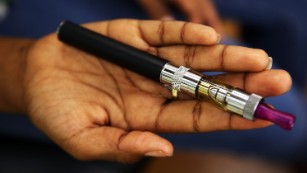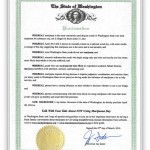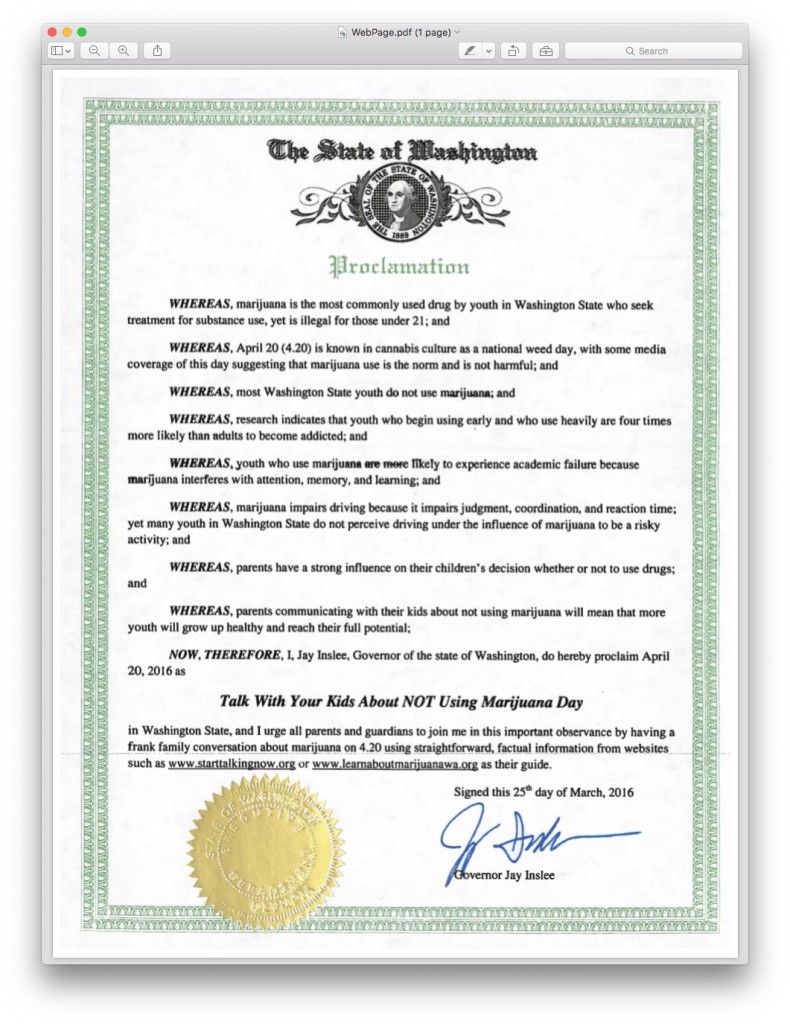http://wtsc.wa.gov/News/report-examines-marijuana-positive-drivers-involved-in-deadly-crashes/
Olympia, WA – Newly released data from the Washington Traffic Safety Commission (WTSC) shows that marijuana is increasing as a factor in deadly crashes. The number of drivers involved in deadly crashes who tested positive for marijuana increased 48 percent from 2013 to 2014.
“We have seen marijuana involvement in fatal crashes remain steady over the years, and then it just spiked in 2014,” said Dr. Staci Hoff, WTSC Data and Research Director.
From 2010-2014, nearly 60 percent of drivers involved in fatal collisions were tested for drugs. Among these tested drivers, approximately 20 percent (349 drivers) were positive for marijuana.
However, just testing positive for marijuana doesn’t necessarily indicate if a driver was actually affected by the drug at the time of the crash since marijuana can be detected in a person’s blood for days (possibly weeks) after a person uses the drug. This new data is able to distinguish between drivers who test positive for THC, the impairing substance in marijuana and those who have residual marijuana in their system from prior use which may have occurred days ago.
The number of drivers testing positive for active THC increased, from 65 percent (38 of 60 drivers) in 2013 to an alarming 85 percent (75 of 89 drivers) in 2014. Approximately half of these THC-positive drivers exceeded the 5 ng/ml THC per se limit (A “per se” limit is the amount of a substance in a person’s blood that according to Washington law makes the person DUI notwithstanding other evidence.)
“With this data we are finally able to see who was high during the crash versus which drivers had used marijuana in the past few days,” said Hoff, “The answer in 2014 is most of them were high.”
According to the new data, the driver with the highest THC level was tested at 70 ng/ml. Half of these THC-positive drivers were also under the influence of alcohol, the majority of those also exceeded the alcohol per se limit of 0.08 BAC.
The largest increase in THC-positive drivers were among males ages 21-25, from only 6 in 2013 up to 19 in 2014 – the most significant increase among any other age group.
The WTSC Research and Data Division, in collaboration with the WA State Patrol Toxicology Lab, abstracted drug types and levels for drivers in fatal crashes back to 2008. The full report and complete analysis of this data is expected to be released in September.
“This study is a step towards answering the myriad of questions we have about the impact of legalized marijuana on driving. We will continue to explore the implications of this information,” said Hoff.
A new law prohibits drivers and passengers from using marijuana while driving. It also prohibits anyone from keeping marijuana in the vehicle unless it is in its original sealed packaging or is stored in the trunk or some other area of the car not normally occupied by people.
“This data shows why this new law is so important,” said Darrin Grondel, WTSC Director, referring to the new statute passed during this year’s legislative session.
From 2008 through 2014, more than 1,100 people died in impaired collisions in Washington. Impaired driving is involved in nearly half of all traffic deaths and more than 20 percent of serious injury collisions. The highest percentage of these deaths occurs during the summer months.
That is why the WTSC participates in the National Drive Sober or Get Pulled Over campaign. From now through Labor Day, the Commission is letting the public know that extra officers will be out across the state at times and locations where DUI is a problem.
“It is our hope that by publicizing these extra patrols more people will plan ahead if they will be drinking or using marijuana,” said Grondel. “Don’t risk getting arrested for a DUI, or causing a life-changing tragedy. Designate a sober, drug-free driver.”
Over 100 law enforcement agencies including all districts of the Washington State Patrol will be teaming up and participating in the extra patrols all across the state.
These extra patrols are part of Target Zero—striving to end traffic deaths and serious injuries in Washington by 2030. For more information, visit www.targetzero.com.






















